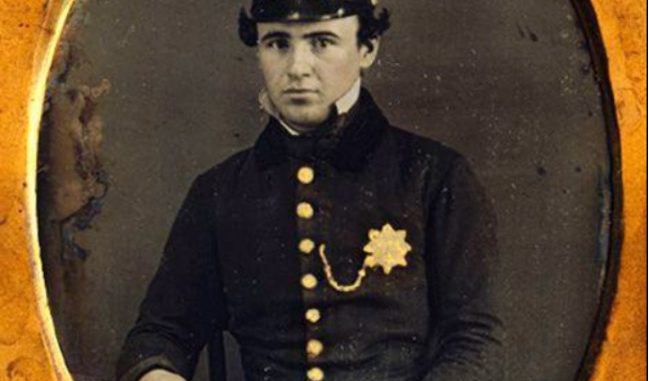

We often receive questions from around the world. After having received several questions relating to photos from the mid-nineteenth century, offer the following information to assist in identifying which department, and which era, the photos may have been taken.
Generally the photos we are asked about depict either officers of the Municipal or Metropolitan forces of New York which existed in the era. For the purpose of this brief article we will address the caps and shields only.
Municipal Police Department
Let us first take a look at a typical portrait photo from the New York City (NYC) Municipal Police Department, which existed during the years 1845-1857. George W. Matsell was the Chief of Police whose office was in the basement of city hall.
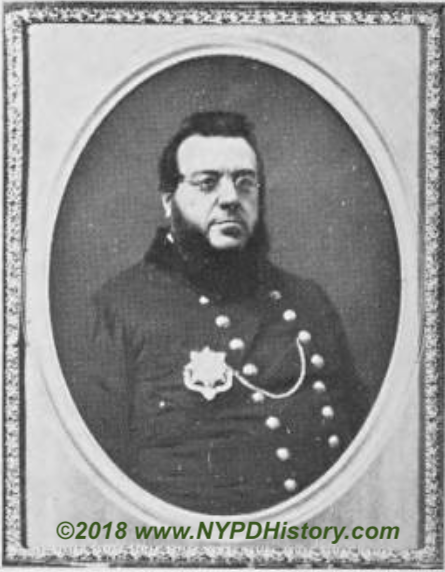
The January 7, 1854 issue of Gleason’s Pictorial provides us with the first illustration and description of the uniform designed, adopted and worn by the Municipal Police, the first uniformed police force in the City of New York.
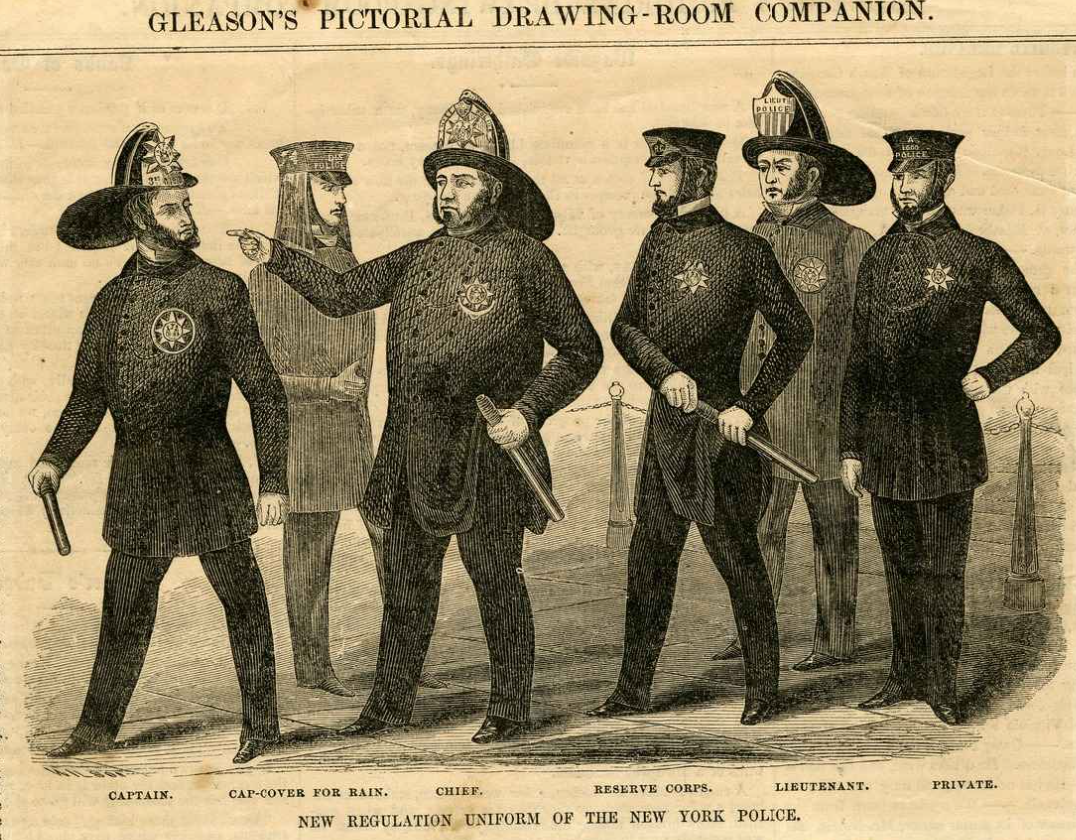
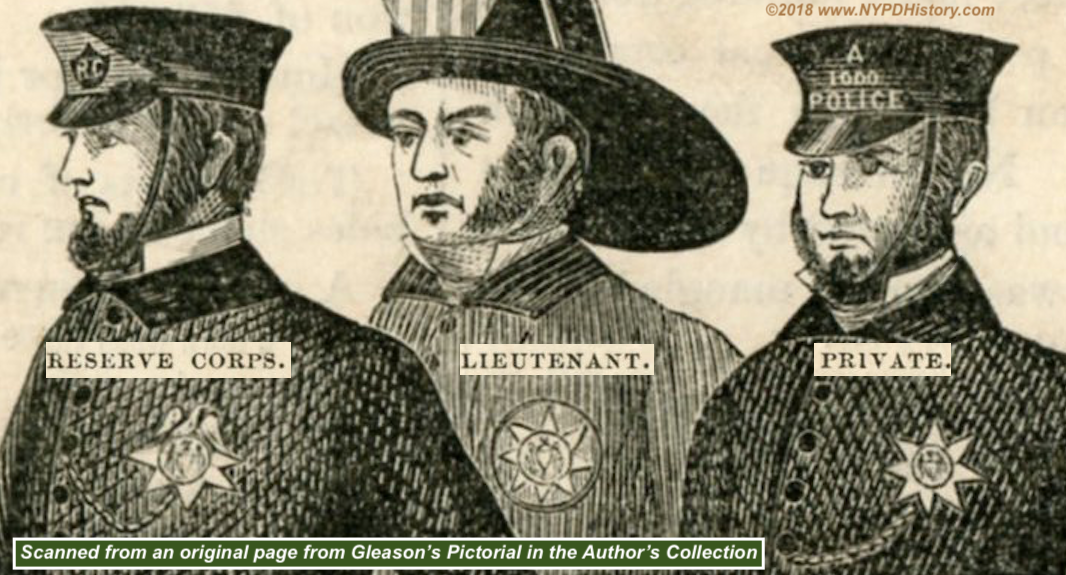
In the above illustration, there is an image of a “Reserve Corps” officer wearing a star shield with an eagle affixed atop the star. On the right, an image of a “Private” wearing a star shield with no eagle. The image, below, is a close-up of the “Private.” It is important to note that the rank of Private did not exist in the command structure of the regular Municipal Police force. Additional research may shed more light on the use fo this term.
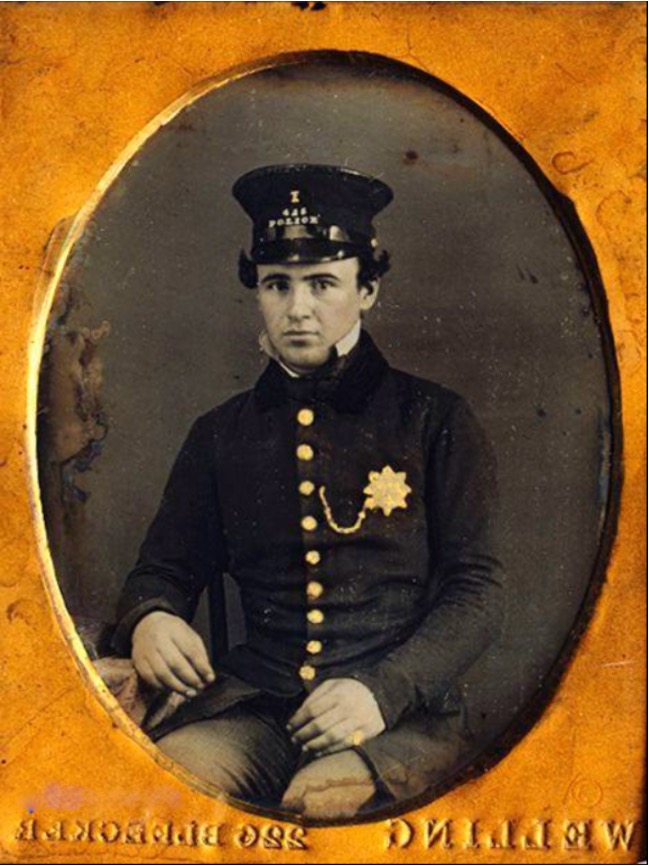
The digital image of a cased photograph, above, has been around online for years. The photo itself sold on eBay in September 2017 for several thousands of dollars!
There is at least one other copy available for sale. If anyone is interested in purchasing the photo, contact the Author.
The photo depicts a Patrolman of the “Municipal Police.”
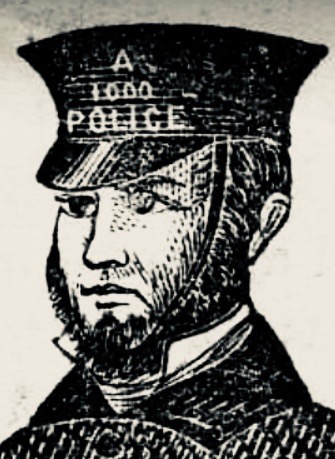

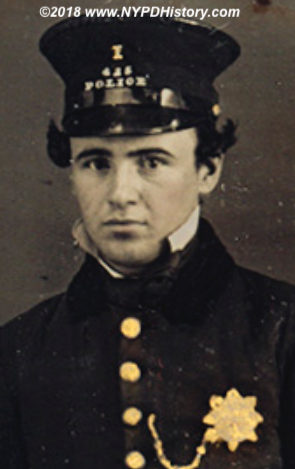
Regarding the cap, the letter “I” on the cap indicates that “section” to which the Reserve Corps officer was assigned. The numerals “445” are the officer’s “Warrant Number.” Warrants were documents, akin to commission certificates, that gave the officer his authority. The word “POLICE” was in raised letters.
What remains to be answered is the the matter of alphabetically designated “sections.” In 1855, the Municipal Police had a Reserve Corps which had “Squads” (not “sections”) that used alphabetical letters as designations.

There was a “Squad I,” however, there is no evidence or information, at this time, that the officers of the Reserve Corps had uniforms and shields as depicted in the photo. It is possible that the author of the article in the issue of Gleason’s Pictorial was used the terminology provided to him, but that the department later adopted different terminology.
There is a lesser probability that the letter “I” is in fact a numeral “1,” denoting the First Precinct.
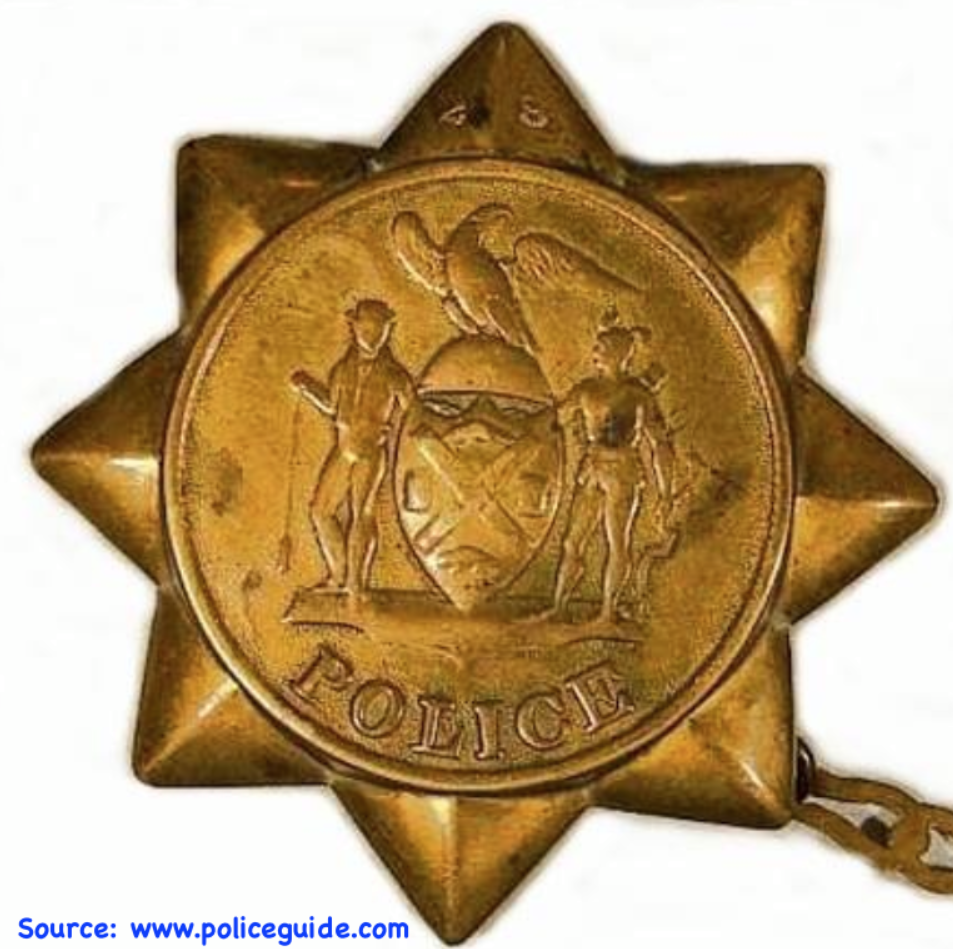
The 8-pointed “star” shield, including slight variations such as a star with an eagle atop the star, is a tribute to the eight original watchmen/constables. The 8-point tradition is carried to this date in the caps worn by today’s NYPD officers.
Metropolitan Police District Era
From 1857-1871, the police force was known as the Metropolitan Police. The uniforms and caps varied during this period, however the breast shield was quite different than that of the Municipal Force. You cannot simply judge a portrait photo by the uniform as both departments had summer, winter, and officer styles with single and double-breasts.
As depicted in the photo, below, the cap was different as was the wreath on the cap. “Precinct 11” appears in the officer’s cap wreath. The 11th Precinct Station-house was located at Union market.
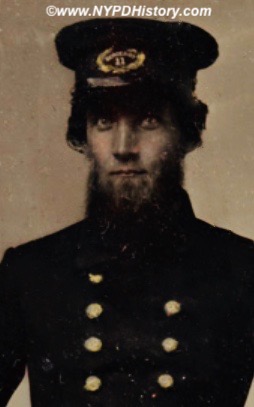
The difference between the cap styles is that the Metropolitan caps were broader as seen in both images.
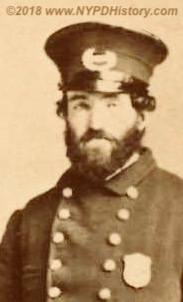
The image, below is a Metropolitan Era breast shield.
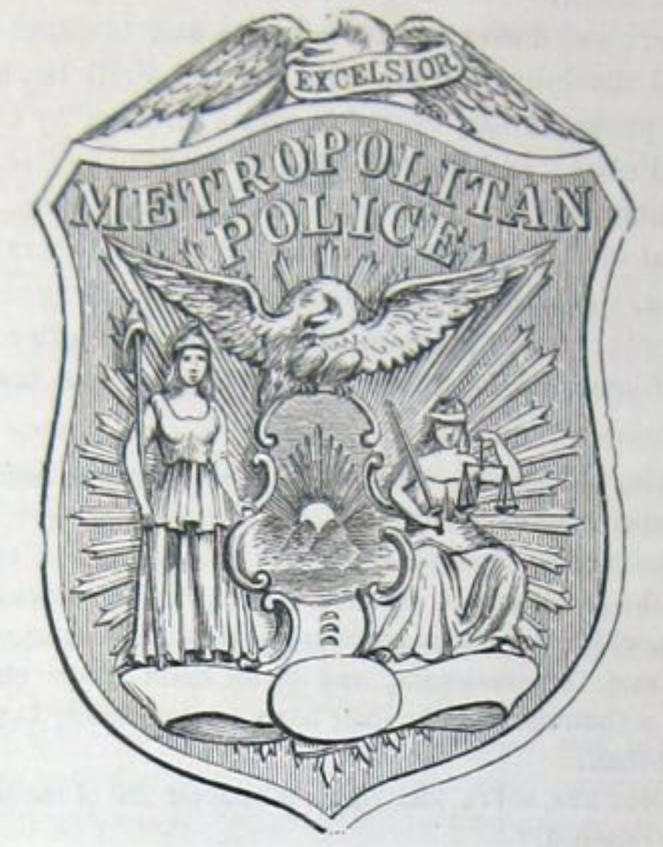
The research and writing of the history of policing in NYC is difficult, and those who have a passion for the same do their best to provide accurate information. New sources of information are continually being identified. If any new information is found on this photo, this article will be updated.
As is the case with all of our articles, comments, input, and constructive criticism are welcome. All of the facts presented in all of our well-researched articles are backed up by documented sources and citations are available upon request.



Leave a Reply
You must be logged in to post a comment.